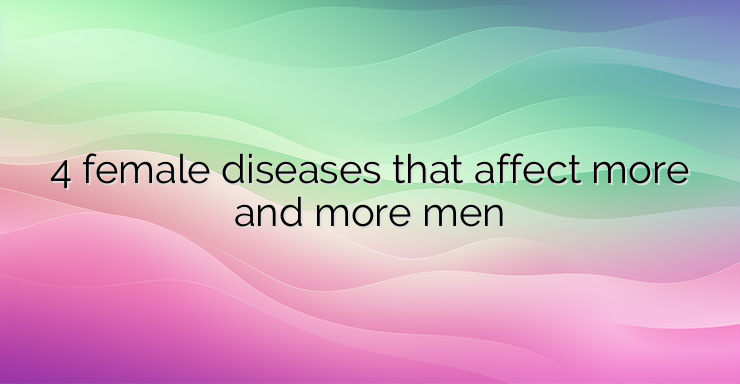Due to a number of genetic, anatomical or hormonal factors, some diseases occur more often in women than in men. To label these diseases as typically female, however, would be to give men the false impression that they are completely protected from them. Such an impression would dull men’s vigilance for the appearance of symptoms of these diseases. And this should not be allowed, because today a number of diseases affecting mostly women are being established in more and more men. Osteoporosis The natural decline in the secretion of female sex hormones with age seriously increases the risk of excessive bone loss and the development of osteoporosis. Statistics show that about 35% of women are at risk of developing osteoporosis. For men, however, the risk is not negligible either. One in five men in adulthood, or about 20%, are at risk of osteoporosis. The group of men over 65 years of age is the most at risk. During this period, the rate of bone loss in men has been found to be comparable to that of menopausal women. An unbalanced diet with insufficient intake of calcium-rich foods is a factor that further equalizes the risks of osteoporosis in both sexes. Breast Cancer The reason women are more likely to develop breast cancer is the simple fact that they have a greater amount of glandular tissue in which the tumors form. Today, however, more and more men complain of excessive breast enlargement, in some cases leading to gynecomastia. In parallel with this process, the risk of breast cancer in men also increases. Today, only about 1% of cases are in men, but the number of affected men is constantly growing. Confirmation that men should be especially alert to symptoms of breast cancer is given by the fact that survival in them after late diagnosis of the disease is much shorter than in women. NEWS_MORE_BOX Thyroid problems Another group of diseases mistakenly considered to be typically female are problems with the functioning of the thyroid gland (thyroid gland). They are mainly expressed in hypo- or hyperfunction of the gland. Women are thought to be between 5 and 8 times more at risk of hypo- or hyperthyroidism. However, the percentage of affected men has been found to be increasing in recent years. Here, too, the main reason for this is the frequent nutritional deficiencies. Irrational nutrition compensates for men’s lower natural predisposition to thyroid problems, and their risk today approaches that of women. Anorexia and bulimia Although they were first diagnosed in women and mainly affect them, these severe eating disorders today also affect about 15% of men. The consequences for both sexes are equally serious. The main reason for the increase in cases of anorexia and bulimia among men is the general desire for a perfect appearance and the unhealthy eating habits associated with it.All four types of health problems are affecting more and more men in recent years. An additional risk of serious consequences for men’s health comes from the fact that men are less likely to seek medical attention when experiencing symptoms of any of these problems. The reason is that they are often cited as predominantly female. Until this misconception changes, the risk for men may remain lower, but the consequences will be more serious.


Leave a Reply